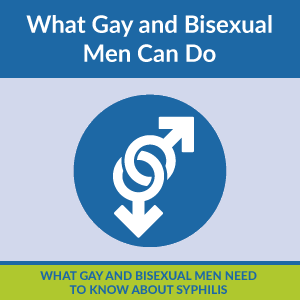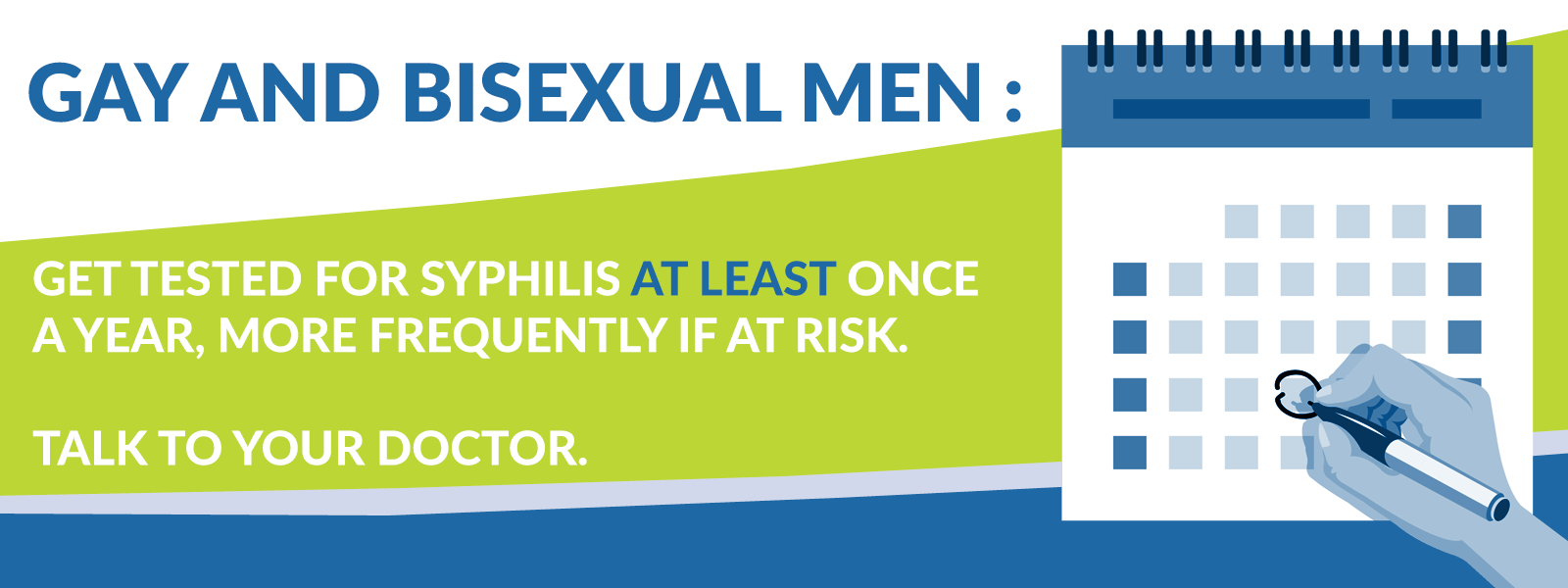What Gay and Bisexual Men Can Do

And Syphilis Is…?
Syphilis is a sexually transmitted disease that doesn’t get a whole lot of media attention. But that doesn’t mean you shouldn’t have it on your radar. Even though it’s simple to prevent and can be cured with the right treatment, it can cause very serious health problems if not treated. Untreated syphilis can eventually spread to the brain and nervous system or to the eye. This can cause problems like hearing loss, stroke, and blindness. And there’s another big concern: Having syphilis can increase a person’s risk for getting HIV or giving it to others.
Here’s Why You’ll Be Hearing More About Syphilis
Syphilis awareness efforts around the country have been ramping up because recent data show that syphilis rates are on the rise. Rates of primary and secondary (P&S) syphilis—the most infectious stages of the disease—increased a troubling 9.3% between 2020 and 2022.
Even though gay, bisexual, and other men who have sex with men (MSM) account for only 4% of the U.S. male population, they account for more than a third of reported P&S syphilis cases. MSM remain disproportionately affected by syphilis as reported cases among MSM increased 4% from 2021 to 2022.
In the United States, more than a third of MSM with P&S syphilis are also reported to have HIV. The troubling reality is that if you are a gay man who does not have HIV, but who is diagnosed with P&S syphilis, you are more likely to be infected with HIV in the future. Having a sore or break in the skin from an STD like syphilis may allow HIV to more easily enter your body. You may also be more likely to get HIV because the same behaviors and circumstances that put you at risk for getting other STDs can also put you at greater risk for getting HIV.

WHAT CAN I DO TO MAKE SURE I DON’T GET SYPHILIS?
If you are a sexually active gay or bisexual man, here’s what you can do:
- Talk to Your Doctor. Have an honest and open talk with your health care provider about your sexual history and ask to be tested for syphilis and other STDs at anatomic sites of exposure. Many men don’t have symptoms so testing is the only way to be sure that you do not have syphilis. If you are HIV negative and have syphilis, ask your health care provider about PrEP.
- Protect Yourself and Your Partner. If you are sexually active, doing the following can lower your chances of getting syphilis: (1) being in a long-term, mutually monogamous relationship with a partner who has been tested and has negative STD test results, and (2) using latex condoms the right way every time you have sex. If you have sex with more than one partner, don’t use condoms, or engage in risky sex behaviors, then you should get tested more frequently (e.g., every 3 to 6 months).
To learn more about syphilis among gay and bisexual men, see CDC’s Fact Sheet on Syphilis & MSM.
CDC is working with other federal agencies and national partners to reverse the increasing trend of syphilis among MSM. In order to accomplish this, CDC needs your support.
What CDC Will Do
To reverse this increasing trend of syphilis among MSM, CDC will:
- Work to harmonize STD/HIV screening recommendations and prevention messages related to sexual health services for MSM.
- Support health care providers to implement recommended STD screening, treatment, and vaccination services through training, guidelines, tools, and resources.
- Improve syphilis surveillance among gay, bisexual, and other MSM.
- Conduct epidemiologic studies to better understand factors associated with syphilis adverse outcomes, such as neurosyphilis and ocular syphilis, and transmission networks.
- Identify and share best practices.